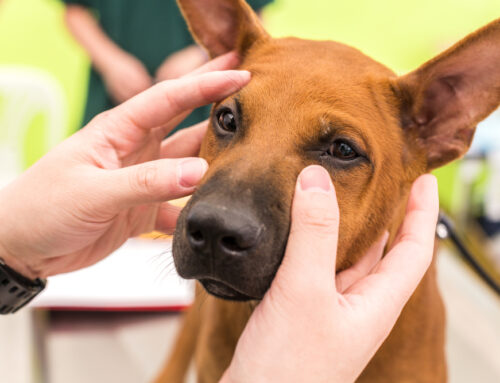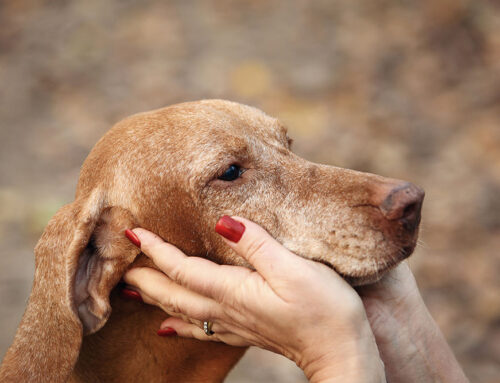Panting is a natural behavior for dogs, but excessive or labored panting can indicate an underlying issue that needs to be addressed. Understanding why your dog is panting can provide valuable insights into their health and wellbeing, and help you determine if their heavy breathing requires veterinary attention. Here are five common reasons why your dog might be panting.
#1: Dogs pant to regulate their body temperature
One of the primary reasons dogs pant is to regulate their body temperature. Unlike people, who primarily sweat to cool down, dogs have fewer sweat glands, which are mostly located in their paw pads. Panting helps them expel excess heat by evaporating moisture from their tongue and the lining of their respiratory tract, and maintain a stable body temperature, especially during hot weather or after physical activity.
#2: Dogs pant during exercise
Dogs often pant heavily during and after exercise or when they’re excited. This is because physical activity increases their respiratory rate, causing them to breathe more rapidly to meet their body’s increased oxygen demands. Additionally, excitement or stress can trigger panting as a response to heightened arousal levels.
#3: Dogs pant because they feel stressed or anxious
Panting can also be a sign of stress or anxiety in dogs. Similar to how people often breathe more rapidly when feeling anxious, dogs may pant excessively in response to stressful situations such as thunderstorms, fireworks, or unfamiliar environments. Recognizing the triggers for stress-related panting can help pet owners provide appropriate support and comfort for their furry friends.
#4: Dogs pant because they are in pain
Dogs may pant as a response to pain or discomfort, whether from an injury, illness, or underlying medical condition. Pet owners should monitor their dog’s panting behavior, especially if it seems excessive or out of the ordinary, as it could indicate an underlying health issue that requires veterinary attention.
#5: Dogs pant because of various medical conditions

In some cases, excessive panting may be an indicator of an underlying medical condition, such as:
- Heatstroke — Dogs are more prone to heatstroke than people because of their limited ability to cool themselves down. When a dog’s body temperature rises significantly, often because of high-temperature exposure or strenuous activity in hot weather, they may pant excessively as a way to dissipate heat. Heatstroke is a medical emergency and requires immediate veterinary attention.
- Respiratory problems — Any condition that affects a dog’s respiratory system, such as pneumonia, bronchitis, or obstructive airway diseases like tracheal collapse or laryngeal paralysis, can lead to panting. These conditions make it harder for dogs to breathe efficiently, causing them to pant more frequently to compensate.
- Heart disease — Heart conditions such as congestive heart failure can cause fluid buildup in the lungs, leading to difficulty breathing and panting. Dogs with heart disease may also pant because of reduced oxygen delivery to the body’s tissues, causing them to feel short of breath.
- Cushing’s disease (i.e., hyperadrenocorticism) — Cushing’s disease is a hormonal disorder caused by cortisol overproduction, often caused by a tumor in the pituitary or adrenal glands. Excessive panting is a common sign of Cushing’s disease, along with increased thirst and urination, weight gain, and hair loss.
- Respiratory infections — Respiratory infections, such as kennel cough or canine influenza, can cause airway inflammation and difficulty breathing in dogs. Panting may occur as a result of the body’s effort to clear the airways and increase oxygen intake.
If your dog’s panting is accompanied by other signs, such as lethargy, vomiting, coughing, or difficulty breathing, it’s crucial to seek veterinary care promptly.
While panting is a natural and essential behavior for dogs, understanding the reasons behind it can help pet owners better care for their four-legged friends. Whether your dog’s panting is an attempt to regulate their body temperature, a response to stress, or an indication of an underlying health issue, you need to monitor their panting behavior and be aware of any changes that could affect their overall health and wellbeing.
If your dog’s panting seems excessive or abnormal, give our Central Kentucky Veterinary Center team a call to schedule an appointment.







Leave A Comment